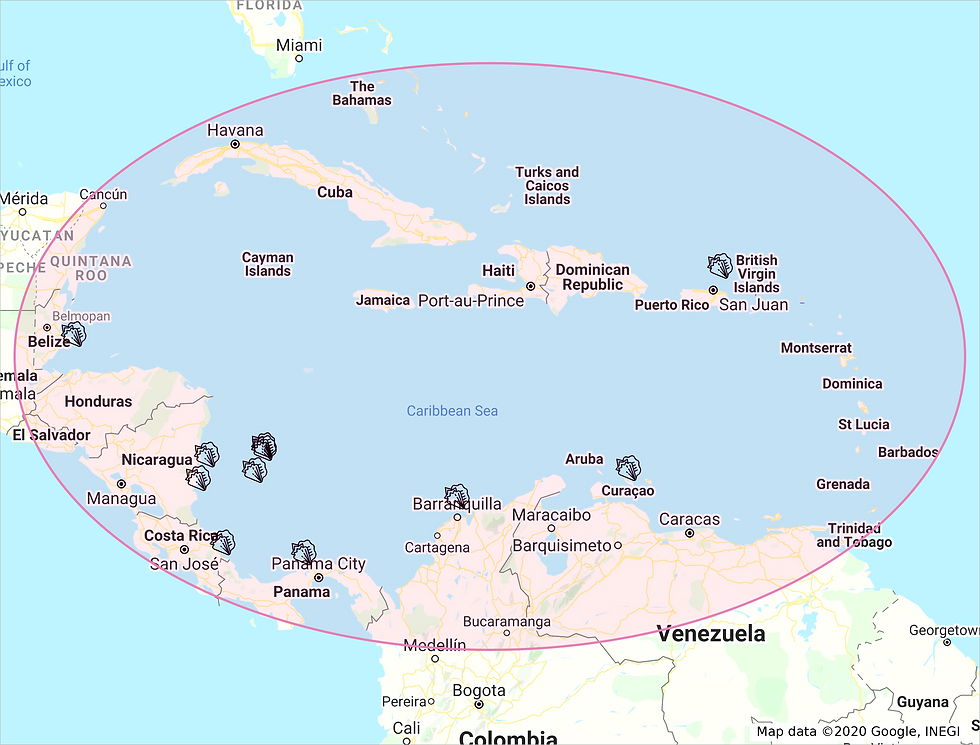April 8th: Poster Talk at Society of Linguistic Anthropology 2022 Spring Conference | Boulder, CO
- Glenda Leung
- Apr 3, 2022
- 3 min read
Updated: Apr 8, 2022
Behind the Research: When Creoles and Spanish Collide: Language and Culture in the Caribbean
Friday 8th April 11:30am-12:45pm MST: Virtual Poster Session (www.gather.town)
Friday 8th April 6:30pm-8:00pm MST: In-person Poster Session (Embassy Suites Foyer @ Hilton Boulder)
Chapter Downloads:
What you get in the download:
Epilogue - Entitled "Sisters of the Shell", a reference and play on bell hook's Sisters of the Yam, the epilogue is a reflective piece on what it means to be a Caribbean creative in the diaspora, working far away from our cradle of creation, the Caribbean Sea. Sisters of the Shell explores the intimate interiority of research and how receptivity of synchronicity and intuition in research spaces can invite balance, joy, and renewed insight into one's work. The sweetest part of the epilogue is to hear from other Caribbean creatives, my sisters of the shell, Felisha Maria with her visual artworks "Naked Shall I Return" and "Whirlwinds of Being", and Rhea Ramjohn through her poem "Queen Conch–Orison I".
Table of Contents
Acknowledgements - Find out about the spark of curiosity that inspired When Creole and Spanish Collide in a Professor Elizabeth Riddle's "Language and Culture" course at Ball State University back in 2004.
Notes on Contributors - Learn about the 19 contributors to this edited volume, what inspires them to work with Creole languages, and their personal connection to research in the Caribbean.
Preface - Explore the scope of the volume and dominant themes (language endangerment, linguistic resilience, and Creole identity).
Poster:

Extended Abstract:
During this poster session, come meet Glenda-Alicia Leung, lead editor of When Creoles and Spanish Collide: Language and Culture in the Caribbean (Leung & Loschky, 2021). Come hear about her five-year odyssey of synchronicities and intuitive flashes that shaped the meat, bones, and spirit of this work, betwixt and between her newly adopted home Colorado and her native homeland Trinidad and Tobago.
Every research project finds inspiration from the wellspring of our lived experience, our innate curiosity and deep desire to understand our universe, and our place in it. This is a provocative statement given the scientific convention to stand objectively removed in the pursuit of research. However, this generation and future generations of researchers bear witness to the changing of the guard. With the increasing vocality and action to decolonize research, we stand on the cusp of new imaginings of research paradigms that stretch far beyond "the seen" of quantitative, qualitative, mixed methods, and the larger than life "big data". What if there were another research paradigm that welcomed the interplay between the seen and the unseen, the material and the non-material, the rational and emotive, the sensing mind and the intuitive mind, the judging mind and the perceiving mind? What if the status quo shifted and it were acceptable for intuition and synchronicity to be part of research design?
Being editor of When Creoles and Spanish Collide decentred Glenda’s notions of research in liberating ways, shifting her away from operating strictly from the position of the logical head. She embraced a more inclusive, cognitively embodied approach to research, honoring her heart intelligence and mind-gut connection, moving into an intuitive understanding and sensitivity towards decision-making. From Glenda’s academic and editorial perspective, this volume was birthed from an emerging research paradigm that holds space for intuition and synchronicity to be integrated into research design.
It may be little known that generations of West Indian Caribbean migrants have long called Central America home. The descendants of English- and Creole-speaking West Indians live in communal enclaves along the Caribbean coast of Central America, where their Creole heritage and language are in contact zones with Spanish language and culture. When Creoles and Spanish Collide: Language and Culture in the Caribbean presents contemporary insight into how these intra-Caribbean diasporic communities grapple with evolving Creole identity and representation, language contact, language endangerment, and linguistic discrimination. Communal resilience oftentimes manifests itself via linguistic innovation and creativity.

Map of the Rimland and research coverage:
Belize
Colombia (San Andres, Santa Catalina, and Providencia)
Costa Rica
Curacao
Nicaragua
St. Thomas U.S. Virgin Islands
Panama





Comments